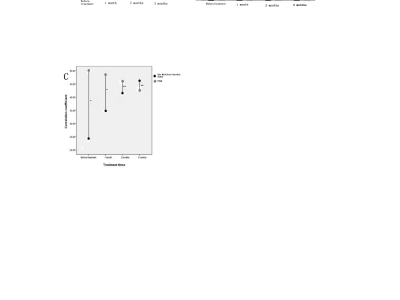Dataset Entries from this Author
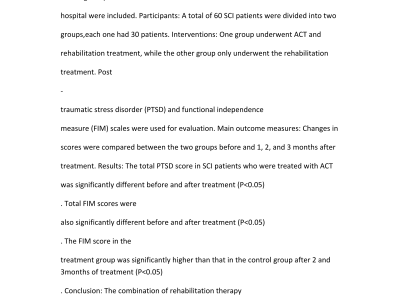
- Categories:
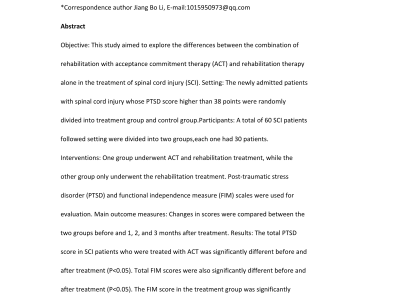
Abstract
Objective: This study aimed to explore the differences between the combination of
rehabilitation with acceptance commitment therapy (ACT) and rehabilitation therapy
alone in the treatment of spinal cord injury (SCI). Setting: The newly admitted patients
with spinal cord injury whose PTSD score higher than 38 points were randomly
divided into treatment group and control group.Participants: A total of 60 SCI patients
followed setting were divided into two groups,each one had 30 patients.
- Categories:
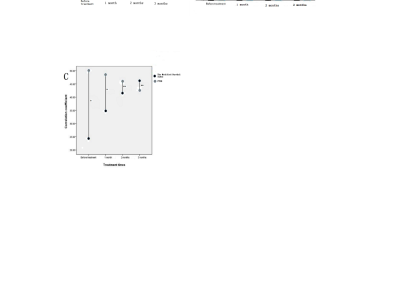
Figure A and B:
A:▲:Comparison of total PTSD scores of the treatment group within before and after 1, 2 and 3 months treatment(P<0.01).▼:Comparison of total PTSD scores between treatment group and control group(P<0.01).■:Look at the control group, there was no significant difference between before treatment and 1 month after treatment(P>0.05), but there was significant difference in the 2 months after treatment(P<0.05), and the difference was more significant in the 3 months after treatment(P<0.01).
- Categories:
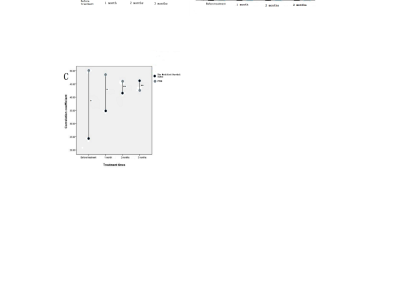
Figure A and B:
A:▲:Comparison of total PTSD scores of the treatment group within before and after 1, 2 and 3 months treatment(P<0.01).▼:Comparison of total PTSD scores between treatment group and control group(P<0.01).■:Look at the control group, there was no significant difference between before treatment and 1 month after treatment(P>0.05), but there was significant difference in the 2 months after treatment(P<0.05), and the difference was more significant in the 3 months after treatment(P<0.01).
- Categories:
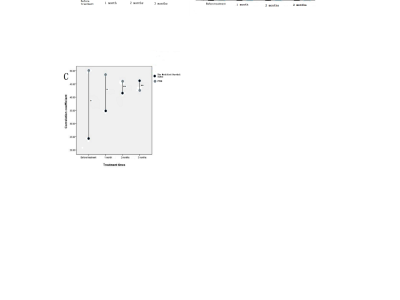
Figure A and B:
A:▲:Comparison of total PTSD scores of the treatment group within before and after 1, 2 and 3 months treatment(P<0.01).▼:Comparison of total PTSD scores between treatment group and control group(P<0.01).■:Look at the control group, there was no significant difference between before treatment and 1 month after treatment(P>0.05), but there was significant difference in the 2 months after treatment(P<0.05), and the difference was more significant in the 3 months after treatment(P<0.01).
- Categories:
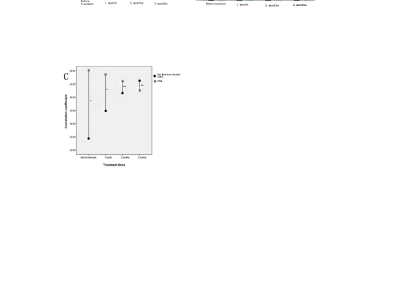
Figure A and B:
A:▲:Comparison of total PTSD scores of the treatment group within before and after 1, 2 and 3 months treatment(P<0.01).▼:Comparison of total PTSD scores between treatment group and control group(P<0.01).■:Look at the control group, there was no significant difference between before treatment and 1 month after treatment(P>0.05), but there was significant difference in the 2 months after treatment(P<0.05), and the difference was more significant in the 3 months after treatment(P<0.01).
- Categories:
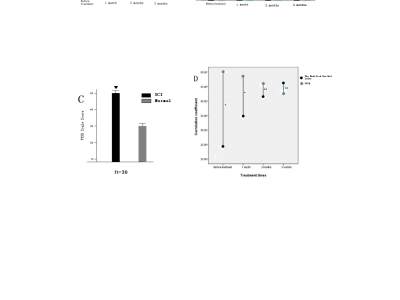
Figure A and B:
A:▲:Comparison of total PTSD scores of the treatment group within before and after 1, 2 and 3 months treatment(P<0.01).▼:Comparison of total PTSD scores between treatment group and control group(P<0.01).■:Look at the control group, there was no significant difference between before treatment and 1 month after treatment(P>0.05), but there was significant difference in the 2 months after treatment(P<0.05), and the difference was more significant in the 3 months after treatment(P<0.01).
- Categories:
